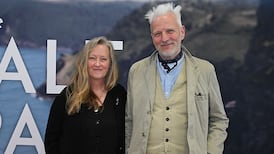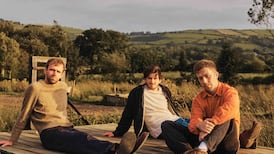With our national extravaganza of all things green coming up on March 17th, singer, songwriter and actor Lisa Lambe helps us to get to grips with the difference between trad and folk.
Is there one?
“I think about them in a similar way,” says the former Celtic Woman. “Especially in terms of singing, they are mainly handed down from one generation to the next, and learned by ear.” In fairness, it’s not a hard and fast division. You might see narrative songs as folk, and wild fiddle playing as trad, but you won’t find an academic to back you up.
Does that matter?
Not really, academics will do what academics do, but we’re here for the music. “Folk is a massive part of being a musician in Ireland,” says Lambe. “Whether it appears obviously in artists’ work or not, it lives somehow somewhere within us all, connecting us to shared experiences and collective memories.”
How do I get going?
Lambe started at stage school as a youngster and studied acting at Trinity, but she has made music. Anyone can do it, she says, and you don’t need particular tools, apart from notebooks, which she carries in case of inspiration. “The only thing to overcome is your own doubt and fear. It is a process,” she continues. “A constant stream of making and creating. Creating something fluid and honest that wasn’t there before you started writing it.”
READ MORE
Sounds lovely but what about the practical stuff?
“Sometimes I set an intense period of time for writing aside, other times a song can fall into your imagination and you just have to capture it.” A melody or a lyric might come first, it’s all about being open. “Being too busy can be just as challenging as being too quiet, and it is rarely evenly paced. So you need resilience, good humour and a solid work ethic.” You also need “a curious mind, and the ability to articulate a clear thought in a new way”. Lambe adds folklore to her inspiration bank, gathering stories and songs for a new show NightVisiting. You can check out classes via Comhaltas with branches at centres around Ireland, go to local sessions and listen, listen, listen. There are also university courses, such as the University of Limerick’s MA in traditional music performance.

So inspiration or perspiration?
“Inspiration always but that takes time. It comes with craft and devotion to the work, to be able to deliver the idea.”
Next stop Carnegie Hall?
Not quite. “To be a practicing folk musician, you need to be flexible to different performing environments,” says Lambe. “From tiny folk clubs to large stadiums, sometimes within the same week or day. You need to know your audience as well as your own material, and be open to those things meeting somewhere in the middle.”
I’ll take a tiny venue. How do I get my work out there?
If there was a formula, we’d all be famous. “Try, whenever you can, to work a little outside your comfort zone,” says Lambe. “That’s how your experience grows.” Different approaches help. “There are many different networks but nothing beats making your own tribe and following your own path.” That’s sound advice: if you’re at an early stage, your peers may end up running venues, and most people choose collaborators on the basis of compatibility as well as talent. Lambe concurs, saying most of her opportunities have come through invitations – which means that yes, things can fall into your lap if you happen to be in the right place.
Lisa Lambe’s NightVisiting is at St Canice’s Cathedral on March 18th as part of Kilkenny Tradfest, tickets €25, March 15th-19th kilkennytradfest.com lisalambe.ie














